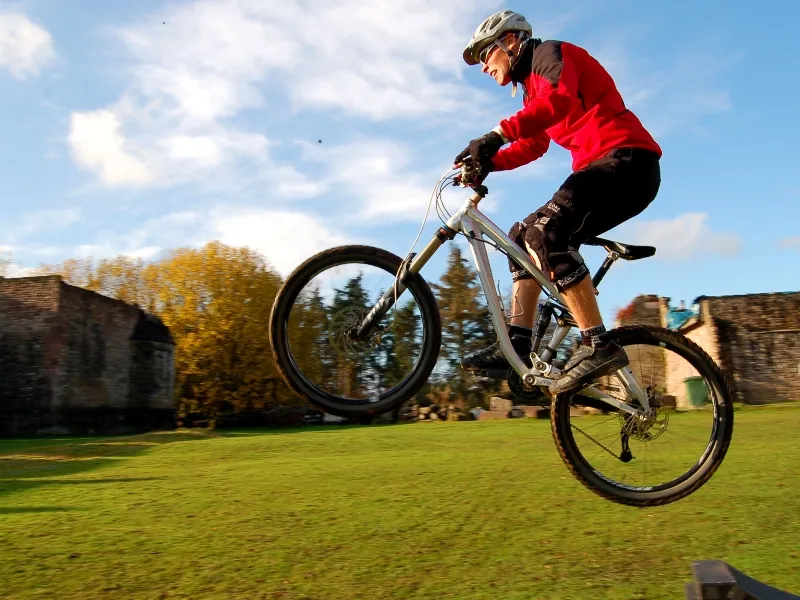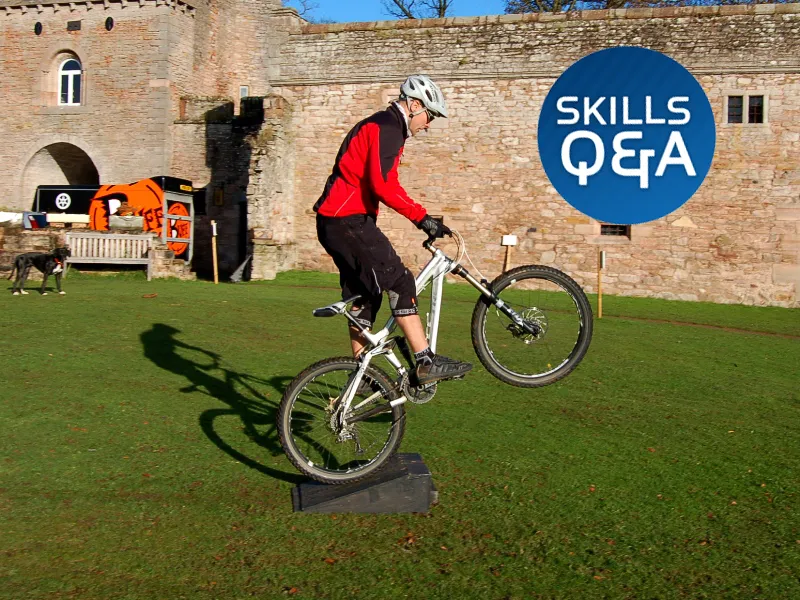Chris Ford of bike training and holiday company CycleActive is back to answer your questions about mountain bike skills and technique.
Q: BikeRadar users have written to us asking for tips on how to keep their bikes straight in the air over jumps. Mark Twohey asked: “So, why does the back of my bike kick out sideways when I jump?"
A: First up we need to look at what makes the bike get airborne on a ramp; Then we’ll check the forces that go through the bike; Then we’ll look at how uneven force can make the bike twist.
Most riders have heard about pump but not everyone knows what we mean by this, or how we use it to jump. Pump is just a mountain bike word for a quick, snappy push into the bike. You can pump in lots of different ways, in different directions, to achieve different things. But in this case we’re concerned with pumping the bike into the face of a jump.
If you look at the picture below you’ll see a slight exaggeration of the rider position as you approach a jump – whether it’s a roller, a tabletop or a natural lip. With forearms low and heels down you are primed to pump the bike in the direction shown by the arrows. You do this just as the bike hits the ramp.
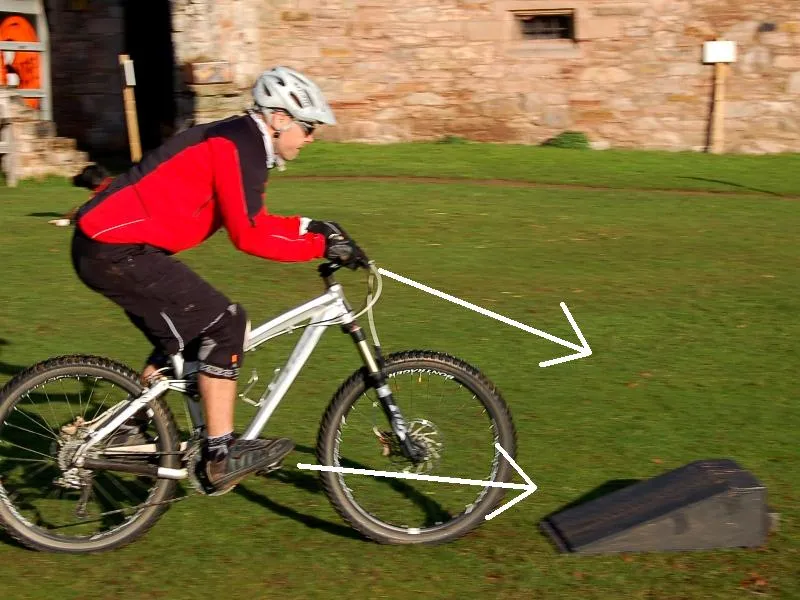
Below you can see the effect of this pumping force. By driving the bike firmly and rapidly into the ramp, even at a fairly low speed, you create a powerful lifting force. This is the key element for success in any attempt to gain height from jumps, and it's one reason why dirt jumpers ride hardtails – none of their pumping force is soaked up by suspension, so everything is translated into lift.
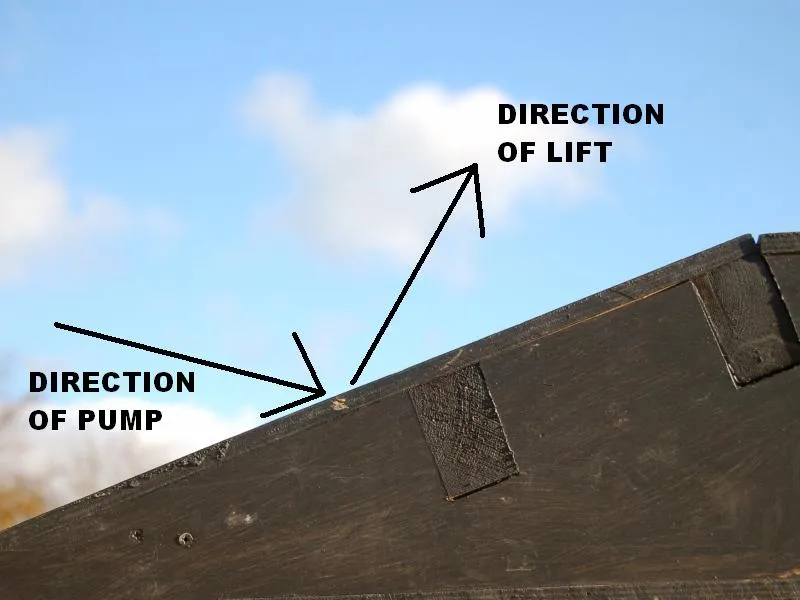
In the picture below you can see just how, even at medium speed, you can generate huge lift by pumping. For anyone who struggles to gain lift or finds the nose tends to dive there is usually one main problem – you could be pulling rather than pumping. This is a natural human response to the need to get the front wheel in the air (to lift it up) but actually this just reduces the rebound off the slope. So instead of taking off, the front wheel gets very little lift and starts to come down as the back wheel is still flying.

So now we get to the question – what makes the bike twist? Well, firstly it could be the result of pulling rather than pumping the bars. Aside from reducing lift, it is hard to pull up with equal force on both hands, and it’s made harder by the wide bars we tend to ride with now. This is why pushing the bars forwards works better as it’s a more natural and easy move, following the position of your forearms to drive the bike into the ramp for an even pump from the top of the bike.
But most important is what happens with your feet. If you look at the two pictures below you will see two contrasting scenarios. If you get your friends to watch you ride, you may quickly recognise one of these. Many riders have their heel down on their lead foot but don’t ensure that they carry enough flex in their trailing foot to get the same position.
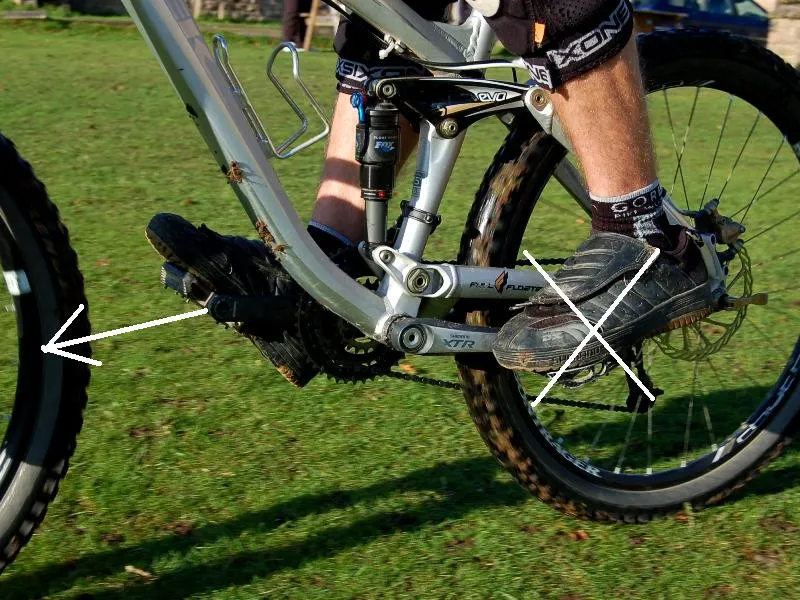
In the picture above you see the result – when you pump you can only push through the lead foot, because the trailing foot is toes-down. The result is an uneven force going through the bottom of the bike, creating that twist which may look cool sometimes, until you realise that you can’t switch it off.
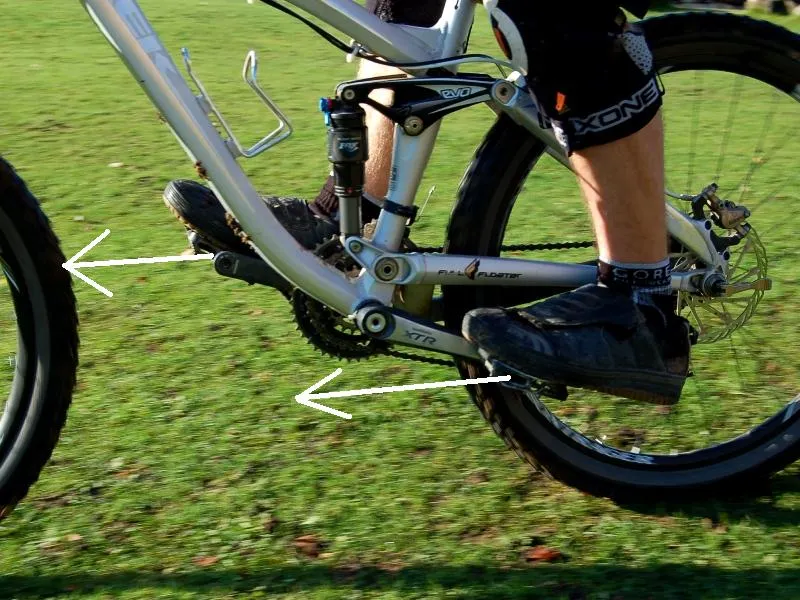
The key is to slow down, take a little time to set up for a jump, and make sure you really flex your ankles, as in the picture above. You can then ensure that the pump is even and the result is a clean, straight takeoff. It may also help to do some calf stretches after each ride (or maybe you stretch after every ride…) to keep them supple.
When you get to the stage in the picture below, the bike is in the air and the feet have levelled out then tipped forward so you can use back-pressure to control the back end of the bike.

We worked on pumping jumps at BikeRadar Live in May 09 with a group of young guys from a bike club. They were getting huge air off our coaching ramps but didn’t know why they always kicked out sideways. Once we worked through it they adapted their approach and in under half an hour we had them tuned up and flying higher and straighter. If you want to develop your jumping skills with the help of a coach, just check out our CycleActive Jumps and Drops courses at forestry trail centres across the UK – full details at www.cycleactive.co.uk.
Here's an extra image for Simon G and armymankin to illustrate how, by pumping hard through the travel then forwards into the ramp, you can effectively “firm up” the bike and ensure you get extra lift as you push into the face of a jump. The Trek Remedy that Rich rides is pretty impressive when it comes to soaking up anything, but by using this technique he can blow through the first part of the travel and then get a much higher jump.
